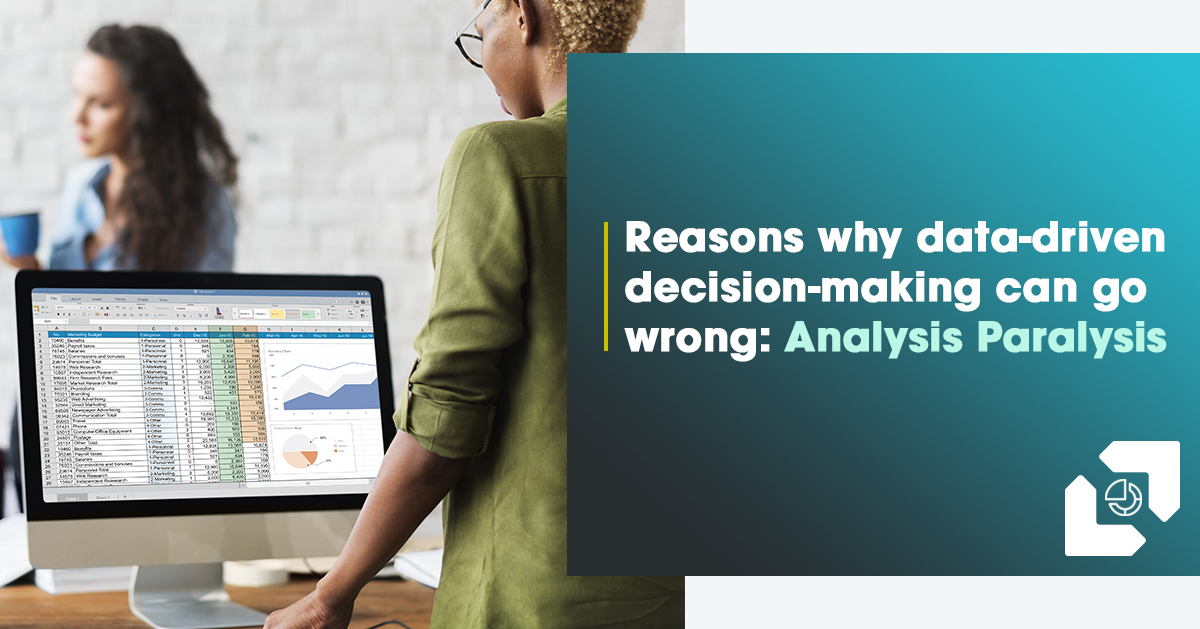The concept of big data has been around for over a decade. While most organizations have focused large amounts of resources towards collection, visualization and analysis of data, few have truly taken advantage of it.
Companies today generate more data than ever. Data, that can give them the opportunity to gain insights into consumer preferences, behaviour, product lifecycle, supply chains, marketing and more. Despite this, many organizations continue to rely on the gut instinct of their executives to make decisions. The few that do rely on data aren’t optimizing opportunities to drive growth. There is rarely a single reason why organizations fail to reap the benefits of their data platforms, but there are three themes that are repeatedly observed. This blog covers the first of these themes, analysis paralysis.
Data can lead to analysis paralysis
An abundance of data can easily become the very roadblock to decision-making that it is meant to remove – overcomplication leading to inaction from the people responsible for growth. While there are a number of reasons why data can create paralysis, here are a few that are most common.
Not identifying data-based objectives
What decisions need to be made through the analysis? Companies race to capture data and analyze it without a clear end goal. A solid data strategy tied to business objectives is key. Data strategy needs to focus on measuring the progress of a project, solving a problem or gaining insights. Focus helps identify the right data sources to inform the analysis.
Unstructured data capture
A problem with multiple sources of data is that it invariably provides varying information, making it hard to know which source to rely on. One solution to this would be to remove the clutter. Eliminate data streams that have the least effect on decision-making and focus on the ones that help generate results. If you’re not sure which data streams to eliminate refer to your objectives to help make the decisions.
Not differentiating between big and small decisions
Data capture and analysis can help make large decisions that shape the direction of a company or smaller decisions that enhance a product or fine-tune a service. Different types of decisions need different amounts and types of data for analysis. Expecting the same types and volumes of data to inform every business decision can result in paralysis. Give each decision the right amount of data and analysis time it deserves based on its importance. Aligning importance can reduce effort put into smaller decisions and direct energy to where it is needed most.
Not focusing on perfection
Perfection should never be the main driver to data-based decisions unless the decision impacts the future of the business. Making decisions based on data analysis should be considered a step in the right direction of a larger objective or goal. It’s okay to make smaller decisions that make incremental improvements. It also provides breathing room in case some of the decisions don’t pan out as expected. Data-based decisions are meant to be iterative, make a change and measure the results. If they’re positive, continue down that path. If they’re negative, course correct and try something new. Either way, you’re making progress.
Lack of hard time limit on data analysis
Time is precious in today’s world. The problem with data is that it continues to accumulate with time. This makes it easy to wait one more week which can easily turn into a month or a year before any decisions are made. Set checkpoints with a regular cadence to force your hand; make decisions based on the information in front of you. While there are no hard and fast rules around cadence, referring back to your data strategy and setting the right strategy to learn from decisions can help decide the right cadence for each type of decision.
Analysis paralysis kills productivity. The amount of data we all have access to doesn’t always make decision-making any easier. Taking steps to reduce the anxiety data creates is the first step towards making thoughtful decisions that drive success. However, analysis paralysis is just one of the faces of the three-headed beast that impedes data-driven decision-making. The next blog in this series covers the second reason why data platforms fail, data silos. Stay tuned.


